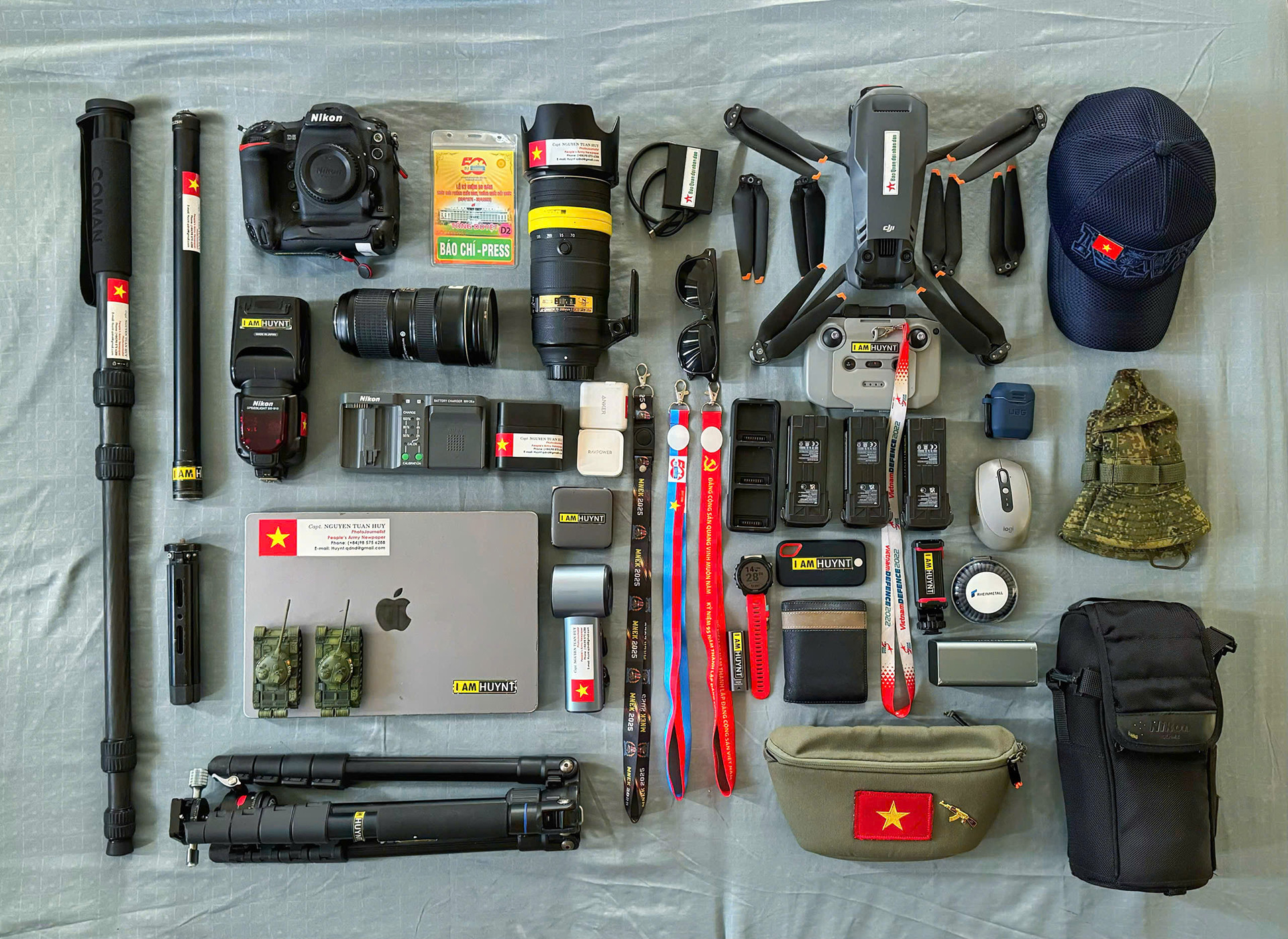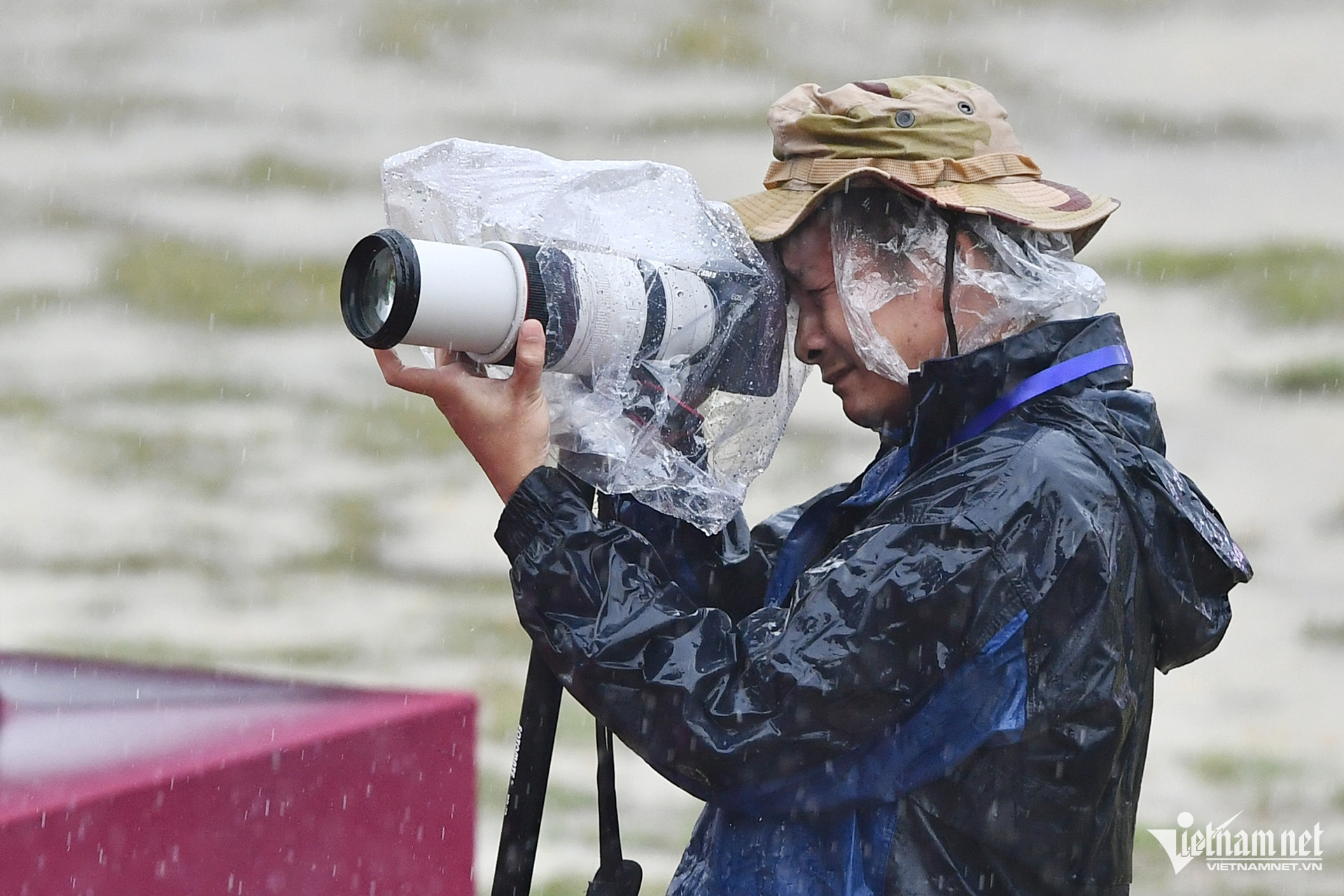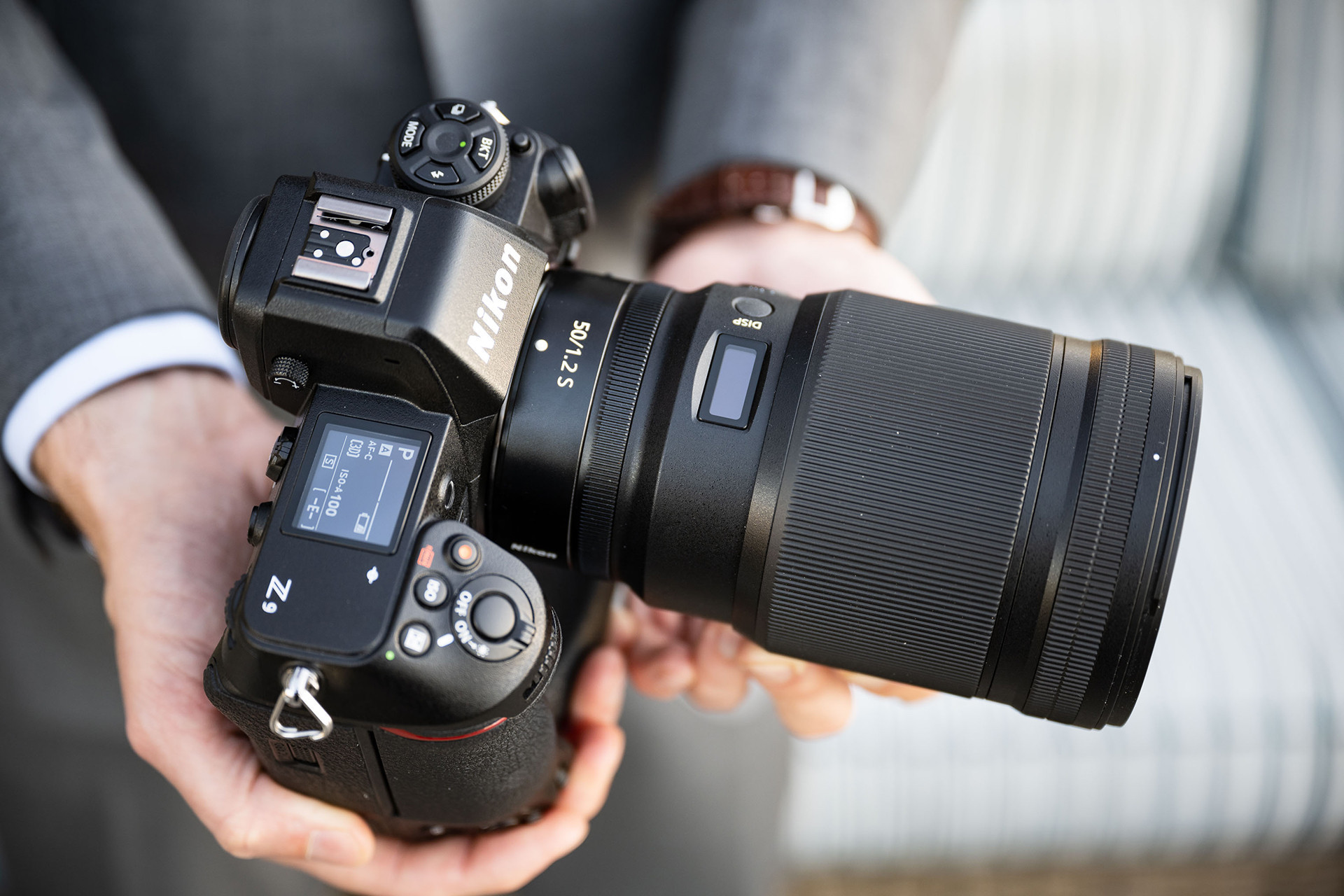The competition to use high-end cameras among Vietnamese journalists is fierce, though relatively quiet. Those who can afford it willingly spend hundreds of millions of dong - sometimes over half a billion - to own the best photography equipment.

Many photojournalists still prefer DSLR cameras for their durability. Photo: PVA Club
About 20 years ago, when early digital professional cameras like the Nikon D1 or even the older Canon EOS DCS 3 (1995) hit the market, they were revolutionary. Today, these models are obsolete and unusable, with image quality limited to a mere 1.3 megapixels.
Technology has since progressed remarkably. Among professionals, the Nikon D6 and Canon 1Dx Mark III are considered top-tier for image quality, though these DSLR models are rapidly being eclipsed by more compact, cutting-edge mirrorless systems.
The DSLR-to-mirrorless transition in Vietnam’s press corps
Many photojournalists still prefer DSLRs, appreciating their sturdy build and reliable performance. Yet the rise of mirrorless cameras has sparked a shift. Popular models today include the Canon EOS R1 (listed at $6,299, or about 163 million VND), Nikon Z9 ($4,996, or about 129 million VND), and older flagships like the Nikon D6 and Canon 1Dx Mark III (around 168 million VND each).

The working kit of a professional press photographer. Photo: Tuan Huy
Nguyen Hai, a photojournalist at Lao Dong, uses two Canon systems: the R3 and R6 with various lenses, costing around 500 million VND. He acknowledges the steep investment but says the silent shooting mode and versatility justify the cost.
Hoang Giang Huy of VnExpress originally purchased a Nikon D6 for nearly 150 million VND but quickly transitioned to the mirrorless Nikon Z9, adding lenses for a total outlay of around 600 million VND.
Pham Quang Vinh of Dai Doan Ket now uses a Canon R5 (65 million VND body only), after retiring his Canon 5D Mark IV and 1Dx Mark II DSLRs.
Journalist Tien Tuan (Dan Tri) uses both DSLR and mirrorless cameras. He highlights mirrorless advantages: higher frame rates, compact design, flip screens, and silent mode. However, he points out that in low light or night settings, DSLR autofocus still outperforms. “While mirrorless is fast and light, DSLRs remain superior in some key aspects,” he noted, citing the Nikon D6’s night-time autofocus and richer color depth.
Thuận Thắng (Znews) remains loyal to DSLRs, saying mirrorless doesn’t match the “moment capture” feeling provided by “banh chung” cameras like the Nikon D5, D6, or Canon 1Dx Mark III.
The evolving market and mirrorless dominance

The first mirrorless camera, the Panasonic Lumix DMC-G1, appeared in 2008. Initially met with skepticism, mirrorless systems are now dominant. Canon declared its EOS-1D X Mark III its final flagship DSLR in 2021. Nikon followed suit in mid-2022, ending some DSLR lines, and will cease all DSLR production by May 2025.
This marks the end of an era for DSLR loyalists. Flagships like the Nikon D6 and Canon 1Dx Mark III may never get successors.
Nguyen Hai said his mirrorless setup improves efficiency, especially for silent shooting environments. “It’s lighter and faster to focus, perfect for modern journalism,” he said.
Huy and Vinh compare the shift to going from gasoline to electric vehicles. “Mirrorless cameras offer high resolution, fast shooting, and compactness,” said Vinh, though he noted color rendition and sensor vulnerability to stage lasers remain concerns.
Online, both DSLR and mirrorless gear remain available. Used DSLRs sell for steep discounts - once 150 million VND new, Nikon D5 bodies can now be found for 30 million VND if they’ve taken 50,000 shots.
DSLR vs. mirrorless: the tech divide

The Nikon Z9 mirrorless camera remains large, built for professionals. Photo: Nikon
DSLRs (Digital Single Lens Reflex) use a mirror mechanism to reflect light into an optical viewfinder. Mirrorless cameras resemble smartphones in structure, displaying digital previews without the mirror assembly.
Despite advancements, mirrorless systems haven’t yet surpassed DSLRs in overall image fidelity and tactile performance. Their advantage lies in speed - some mirrorless models shoot up to 60 frames per second, far outpacing DSLR’s 16 fps.
But even with rapid innovation, the DSLR’s rugged reliability and image quality still make it a trusted choice for many professionals.
Hoang Ha